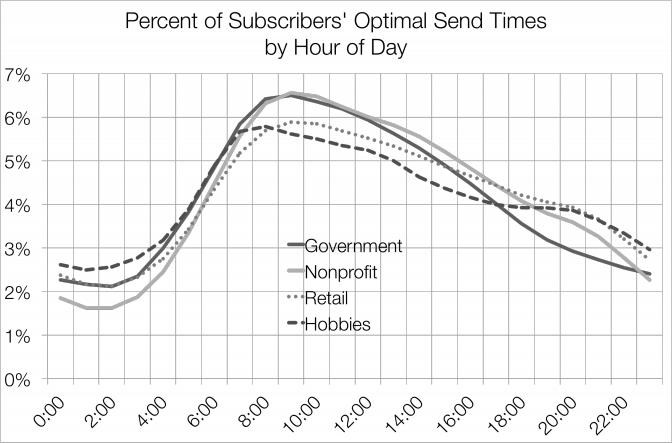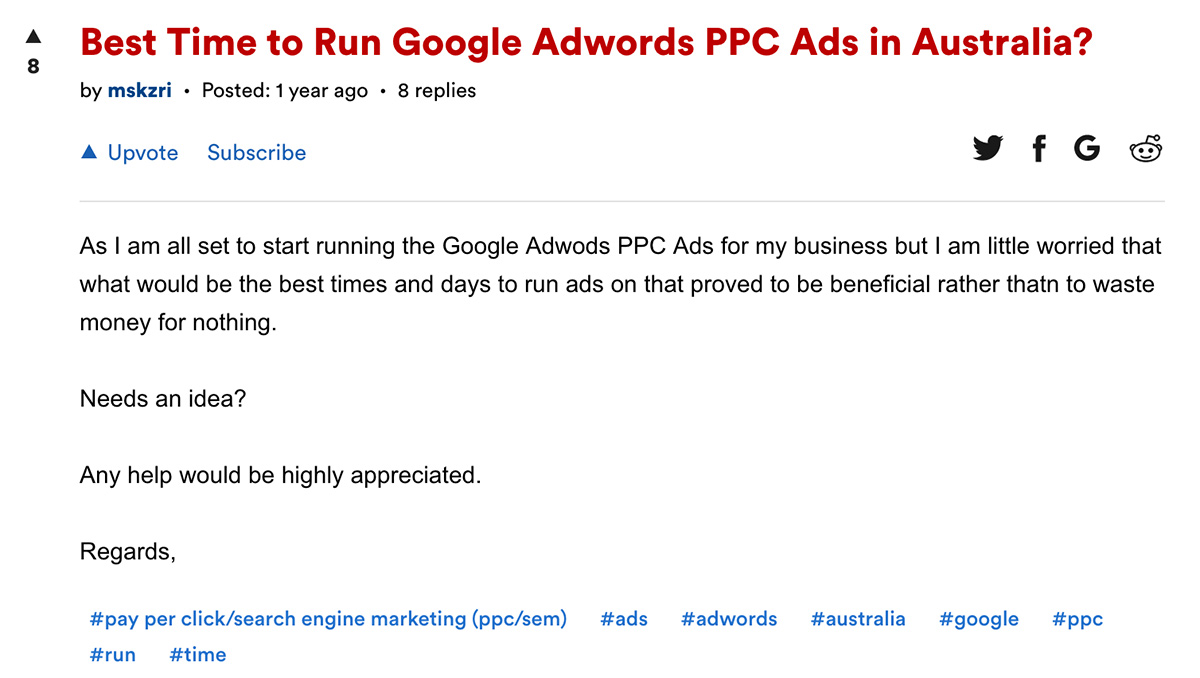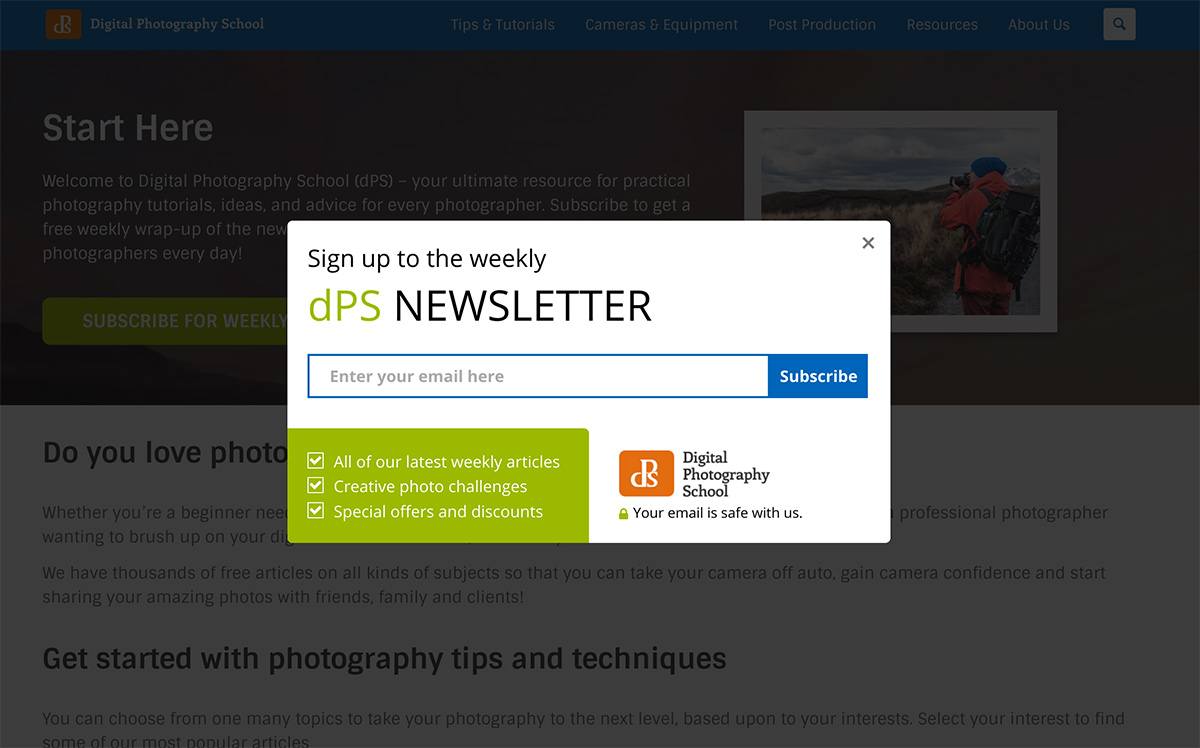
It’s funny the things you pick up as you spend more time in an industry. Little ideas, strategies, and patterns that are usually completely lost on you in the beginning stages but that the “experts” all seem to know.
The blogging industry is no different. There are so many details that, once discovered, make a huge difference to how you operate on a day-to-day level.
In today’s post I’m going to talk about one idea that I have always kind of known but never really appreciated fully. It makes an enormous difference to how many emails get opened, ads get clicked, etc.
I hope this helps someone out there do things a little quicker.
So what is this one detail we should all know?
When you work in a crowded space like blogging it’s important to try and get every little advantage that you can.
And while this detail might not sound that exciting when you first hear it, I guarantee it will impact the way you do things tomorrow.
So what is it? Here we go:
Make sure to differentiate this from the time that you send out your newsletters or publish a blog post as those are different things. Here we are talking about the time that they actually see and interact with it.
Let’s have a look at how this works and how it applies to all the things we are trying to do online.
The importance of timing on the web
I have been thinking about this topic for a while but was reminded of it today when I was listening to the latest episode of This American Life where the editor of the Dallas Morning News replied to a critical email from a newspaper reader in less than 20 minutes.
It occurred to me that (other than it being a really cool thing for the editor to do!) the email must have come at a time when the editor was receptive to such a criticism, had time to open and reply to the email, and was in the mood to actually do so.
That’s a lot of factors.
And I wonder how many of us know, on average, what time of the day/week we are most likely to hit that sweet spot with our readers and subscribers in our niche and on our lists specifically?
Taking it to the next level, I wonder how many of us know the same information for platforms like Facebook and Twitter when we are promoting our new articles or interacting with people about them?
This is really important stuff to figure out because a few hours could mean the difference between a post going viral by hitting a certain number of social shares, a sales target being reached, a post getting indexed well on Google because it got a huge amount of traction, etc.
So how do we do ensure that we’re publishing, emailing and setting adverts to go out a time when people are most likely to action them?
How to get the timing right for your blog
Here are some thoughts based on experiments that I’ve done on my own blog. As always, if you think I’ve missed anything exciting please head to the end of the post and leave me a comment.
1. Know your audience and their daily schedule
How much do you know about your readers and their daily schedule? What about the readers you want to reach but haven’t quite done so yet?
Let’s say that you have a blog about teaching. While general email marketing wisdom might suggest emailing your list at, say, 9am on a Wednesday, this has obvious problems for teachers who would be in the middle of a class!
Of course, we’re only talking about averages here, but every industry will be different and so it’s important to have at least a vague idea of your blog’s demographics, time that they are online, their habits, and so on. This is a very important starting point.
2. Send out a survey and get feedback
One way you address this in a direct way is to send out a survey to your readers and ask them directly when they would like to see your newsletters in their inbox. This is a really interesting tactic because it then sets up an expectation in the mind of the reader – they will be looking out for your content and feel like the have participated in the process of having it created.
Giving your readers a sense of ownership in your blog is a very powerful marketing tool. When someone feels like they have a stake in something they are more likely to share content, leave comments, and generally evangelize your brand more.

You can do this by simply publishing a blog post and asking people to respond in the comments with their preference. However, I prefer to send out an email survey with a service like Survey Monkey as then the results are private and you’re more likely to get detailed responses as people are responding straight out of their inbox.
Be careful about how you structure your questions. For example, just because someone says they would like something on a Wednesday doesn’t mean that Wednesday is the day that they will read it. Researching about how to craft your survey questions is really a worthwhile exercise.
3. Research industry standards and then compare
Around this time you’ll also want to take a look at your industry standards. This is important because you might actually be getting good numbers without knowing it. For example, I have had people ask me why their open rate of 20% is so low when actually it’s a full 5% to 10% higher than average!

Image source: MailChimp
There is some absolutely excellent research by Mail Chimp on some of this stuff and it’s a really good starting point. This is obviously very heavily catered towards email marketing but, seeing as that is a big part of what we bloggers do, it is a really good way to get an overall picture.
4. Get anecdotal advice from people in your industry
If you can’t find any solid research that comes from massive amounts of data then the next step is to look to those in your industry who may have run their own experiments.

Places like Warrior Forum and Inbound.org have a lot of really smart people who are extraordinarily generous about giving away the things that work for them. I am often pleasantly surprised at how much detail people are willing to share about their own “trade secrets”.
I’d highly recommend joining one of these and also looking for some niche-specific forums or communities where you can drill down in to the stuff that works for your particular topics. This is also a really good way to make contacts for collaborations, guest posts, etc.
5. Run split tests and compare
Of course you knew I was going to mention split testing! To be fair, this is really the only way to solidify the ideas that you have into actual real and practical information.
If this is new to you, split testing is essentially where you have two identical versions of an email or landing page and where you change one element and send it out to segments of your audience to see which performs best.
The element that you change might be a color, title, image or, as we’re doing here, the time that you are sending out the newsletter to your audience.
A/B testing can turn into a maddening and endless pursuit of the perfect result, and it often distracts you from things like creating really good content for your blog. For that reason, I’d recommend starting with a few basic email split tests and then move on to some slightly more complicated advertising tests like running the same advert at different times of the day. This can be easily done with Facebook advertising and most other platforms.
6. Train your readers to expect certain times
One thing that you will see a lot of bloggers do is send out their newsletters at the same time every week. This is an interesting tactic because, while it might not be the ideal time of the day, it trains people to expect the notification and thus might make it more likely to be opened.

One example of this is Digital Photography School which is a real powerhouse of content. Instead of sending out notifications of every article they encourage readers to sign up to a weekly summary which goes out via email and is also occasionally used for promotions.
Again, if you go down this road you’ll want to make sure you inform readers at the time of sign up so that they know what is going on. And, as always, you’ll need to test it for a period of time and then compare it to something else to see if it’s getting the desired results.
7. Stalk people on Twitter
This tip relates specifically to emails that you send out to other bloggers in your niche when you are trying to organize a collaboration, guest post, etc. as part of your ongoing blogging strategy. Of course I don’t mean actually stalk them, but using Twitter and social media to find out about the times they’re online and their preferences can be very useful.
IMO the craze of roundup posts are A) getting ignored by most visitors & B) not a tactic Google loves. New WB Friday https://t.co/K2wO64J5v5 pic.twitter.com/pF0KFTiZLa
— Rand Fishkin (@randfish) March 10, 2017
For example, have a look at this Tweet and subsequent video by majestic SEO dragon, Rand Fishkin. This is a prime example of how a little bit of research can save everyone time because it is clear, in this example, that Rand ain’t gonna do roundup posts. In my opinion, it could damage your chances at getting future responses from Rand if you send him a mass email asking for a reply (P.S. I’ve done that!).
A final word on timing
You might have got to the end of this post and decided that you still don’t think it is that important of a factor to spend all this time thinking about and that is okay.
But if that is you I’d encourage you to think of all the hours that go into your blog posts, newsletters, etc. and then think about how much of a waste it is to miss out on a few hundred/thousand views just because you’re sending it at a time when people can’t take an action. It’s especially sad if it’s a really helpful product or service that you’ve worked for months on.
You don’t have to get this stuff perfect, but a few little experiments or questions could give you dramatically different results, and those results might make your blogging, email marketing, and adverts a lot more effective.
Have you experimented with this?
I’d love to know whether any of you gals and guys have done any experiments with this. Do you find any particular day of the week effective? And how do you know that it is the best option for your blog? Please leave a comment below and let me know.